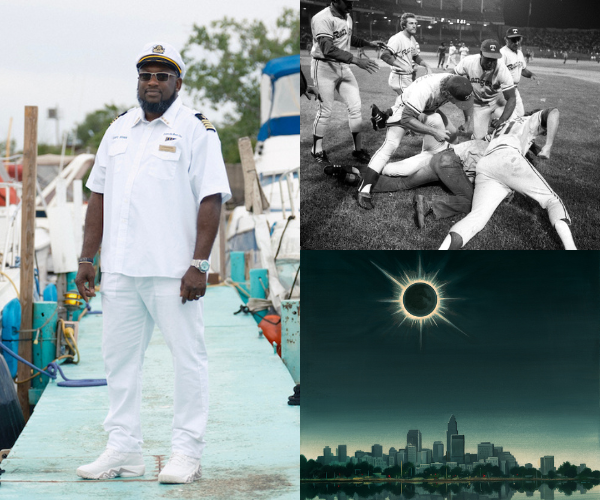A cool breeze blew as politicians, civic leaders, interested onlookers and a smattering of students gathered on the Great Lakes Science Center front lawn for the unveiling of Cleveland’s first lakefront wind turbine.
Framed by the skyline and Cleveland Browns Stadium, the 146-foot turbine is small when compared with the 400-foot behemoths at wind farms throughout Europe. (It will produce about 7 percent of the Science Center’s energy annually.)
But it’s a towering symbol for our city’s lakefront: artistic, educational, collaborative, sustainable and inspirational.
It’s what I remember the future promising as a grade-schooler during the energy crisis of the late 1970s. Science and social studies classes were filled with lessons on solar, wind, nuclear and hydroelectric power.
All homes would have solar panels, and space-age windmills would sprout up across the country, we were told. Heck, if President Jimmy Carter could put solar panels on the White House, it wouldn’t be long before every house had them.
But it never happened. And it’s nagged at me ever since, like a first-grade friend who moves away during summer break never to be heard from again.
As a kid, you’re wowed by the what-could-be, which is likely why I missed the fact that Ronald Reagan removed the panels when he became president. And why it took two decades for someone to explain how the financial costs of solar and wind energy were too high once oil prices fell.
While I can better understand the reasoning now, I still don’t like it.
As President Bush reminded us back in February, America is still “addicted to oil.”
It’s a warning that seems eerily similar to the one President Carter issued 27 years ago this month, when he likened the oil crisis to “the moral equivalent to war.”
Perhaps we should have listened then.
I know I did. And it captured my imagination unlike any comic book I ever read.
That’s what the Science Center’s banking on: Inspiring and motivating a new generation of students and potential scientists by bringing the interrelationship of science, the environment and technology to life.
It’s also why Cleveland should be excited about its new addition to the lakefront.
Originally a community project of Leadership Cleveland and Sustainable Cleveland, the turbine was a joint effort among the Science Center, The Cleveland Foundation, Parker Hannifin and Lubrizol.
“This project is a wonderful example of collaboration and showcases Cleveland at its best,” Ronn Richard, president and CEO of the Cleveland Foundation, told the crowd gathered at the unveiling.
In fact, the turbine recalls when Cleveland was among the best at innovation and entrepreneurship. In 1887, Charles Brush built the first electric-producing wind turbine — a 60-foot, 40-ton wrought iron monster — to power 350 incandescent lamps in his Euclid Avenue mansion.
Today, the Science Center’s turbine represents Northeast Ohio’s foray into advanced energy as an economic driver. Built around our manufacturing expertise, academic strengths and movement toward sustainability, our region’s future has the potential to be “renewable, efficient and clean.”
And as symbols go, this one has lofty intentions.
Cleveland Public Art has partnered with the Science Center to commission New York artists Allan and Ellen Wexler for a public installation at the base of the turbine. Dubbed WindWorks, the piece will include two pathways, based on the actual shadows of the turbine on the equinox, and a circular piazza divided into 24 sections symbolizing the hours in a day.
At its peak, with winds of about 31 mph, the turbine generates 225 kilowatts of electricity (enough to power more than 300 refrigerators).
But even on a breezy day like this one, it’s easy to see the turbine powered by the wind of change.
Trending
-
1
-
2
-
3
-
4
-
5










